“The City of Critical Reconciliation|Die Stadt der Kritischen Versöhnung“
The thesis looks to form an architecture that is a microcosm of the ever-changing dialectic ideas of the city, the meaning of buildings and to explore the potential of architecture’s temporal and memorial qualities. This is done through an architecture that explores reconciliation, the site with its history and the instantaneous present, the buildings with a forgotten past and lost city while looking towards the future.
The thesis explores Berlin with the writings of David Lowenthal, Walter Benjamin and Aldo Rossi; exploring notions of primary elements, urban artefacts, Critical Reconstruction while considering the traumatic but rich history and present state of Berlin through an architecture that embodies the dialectic ideas of Berlin. The importance of memory and working through the past is an idea that is embedded in German Culture. Vergangenheitsbewaltigung is a word that emerged after the atrocities of the Second World War and describes how history should be worked through. This is significant as this idea has even affected the design of memorials and counter-memorials within the city. Peter Eisenmann’s ‘Memorial to the Murdered Jews’ is located on the way to the Reichstag to serve as a reminder to politicians and alike to consider that their actions have visible consequences. In many ways, the work of artists such as Rachel Whiteread with counter memorials such as this, are more powerful than statues or memorials intended as remembrance as they evoke an emotion within us which is true to expressionist traditions. So, this brings about a choice of whether to work through and reconcile with history or to draw a final line.
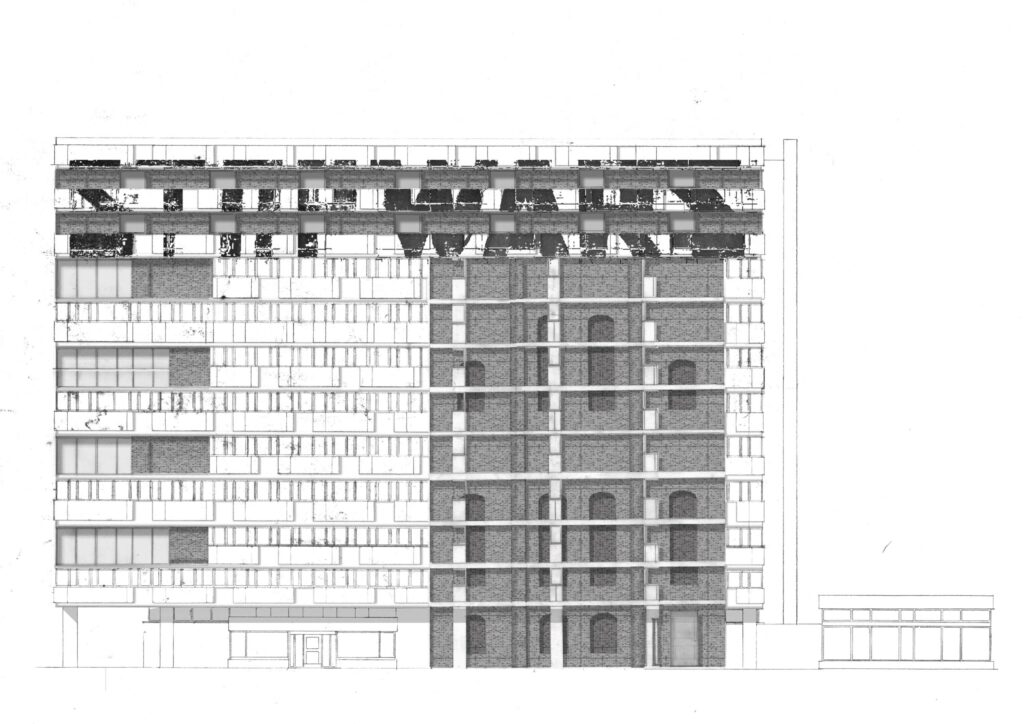
The Elevation depicts the ideas of “excision” when applied to the facade, the shop-front for communism has changed to become a shop-front for history through an unwrapping similar to Christo and Jean-Claude’s Reichstag.
1:100@ A1
Hand-Drawn on Tracing Paper
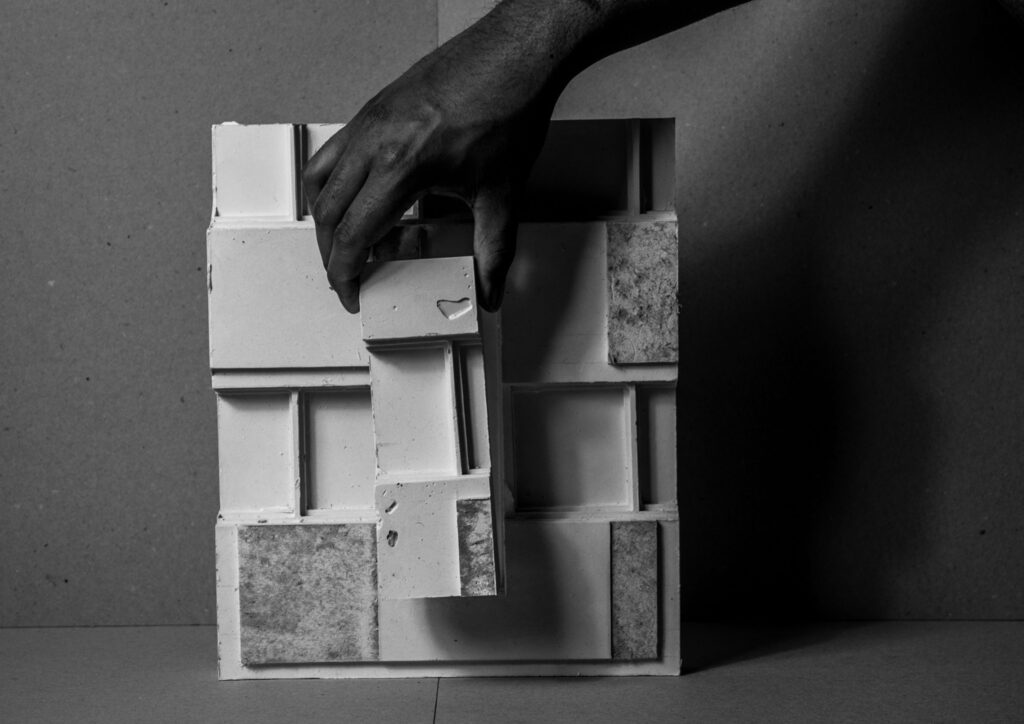
“Excising” is the act of repairing meanings of the built environment by means of removal to repair. Shown is the act of excising a façade element that retains no relevant meaning.
Plaster, Iron Oxide pigment
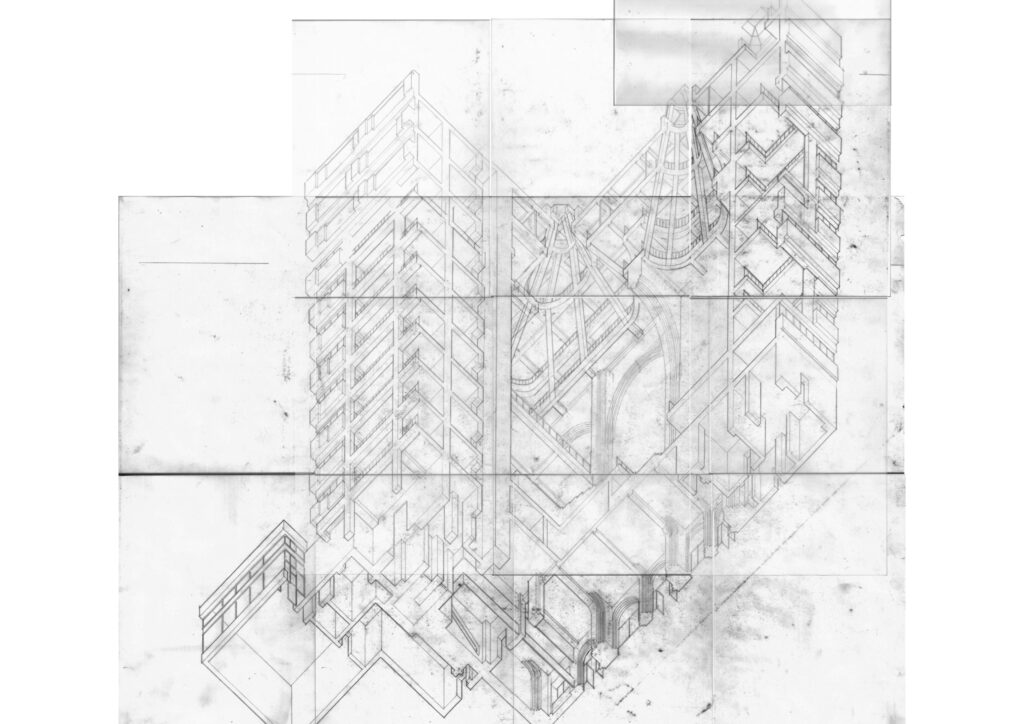
The drawing depicts the interplay between front facade, theatre, occuli and brick arches as well as the existing/proposed and displays the concept of the building within a building.
1:100@ A1
Hand-Drawn on Tracing Paper
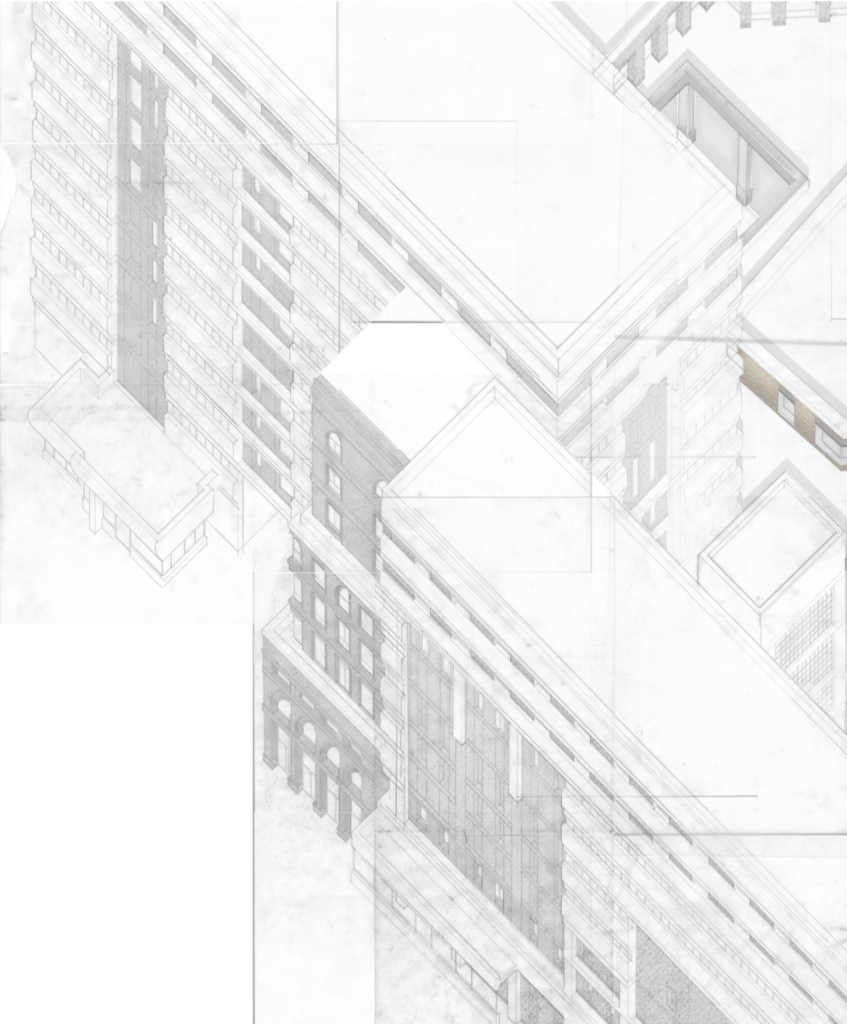
Axonometric of Proposed Brick Museum Entrance
1:100@ A1
Hand-Drawn on Tracing Paper
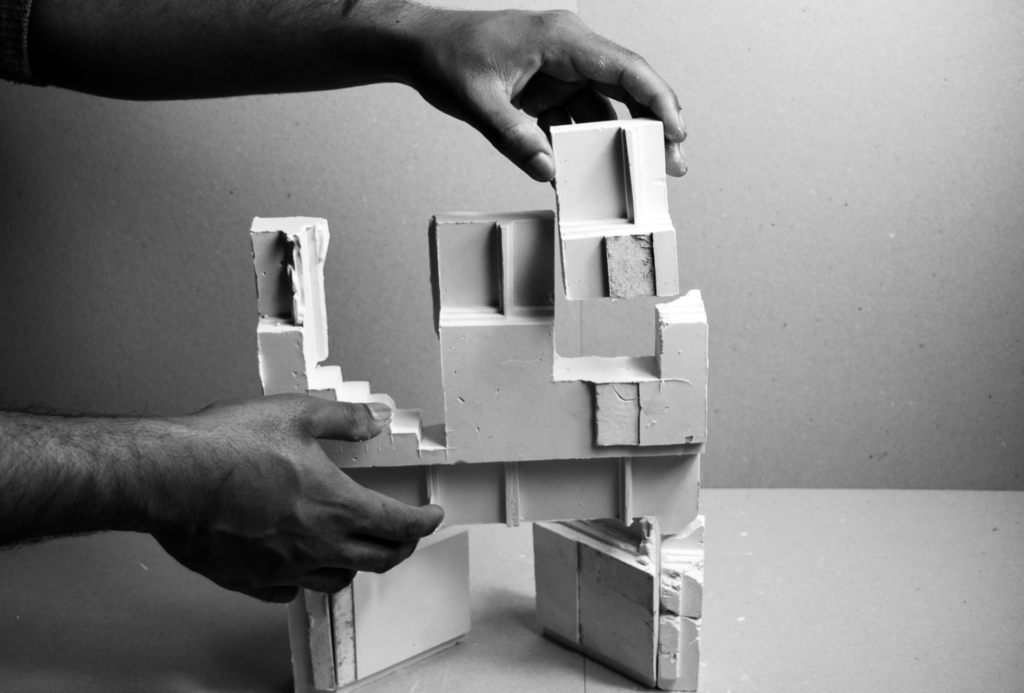
Conceptual Model Exploring Carving for Intervention
Plaster, Iron Oxide Pigment
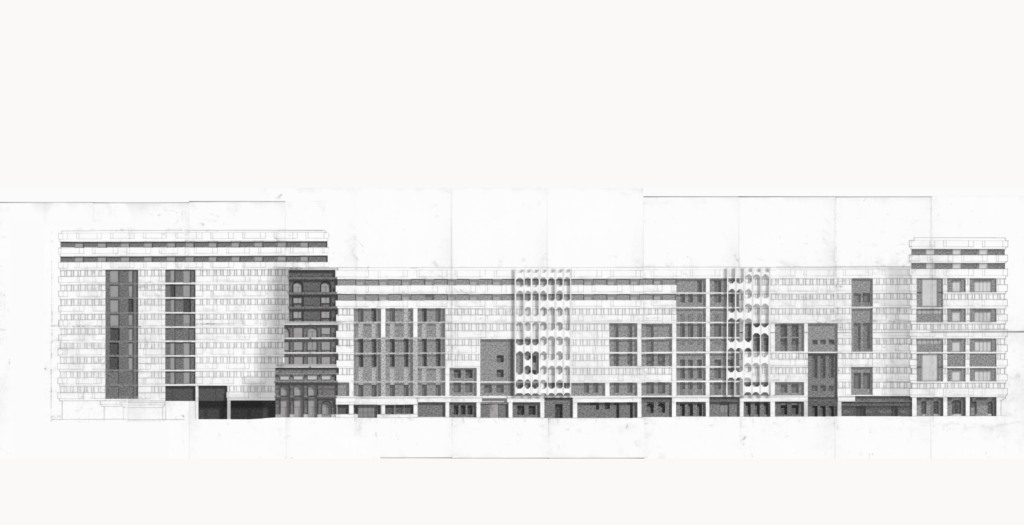
Proposed South-West Elevation
1:100@A1
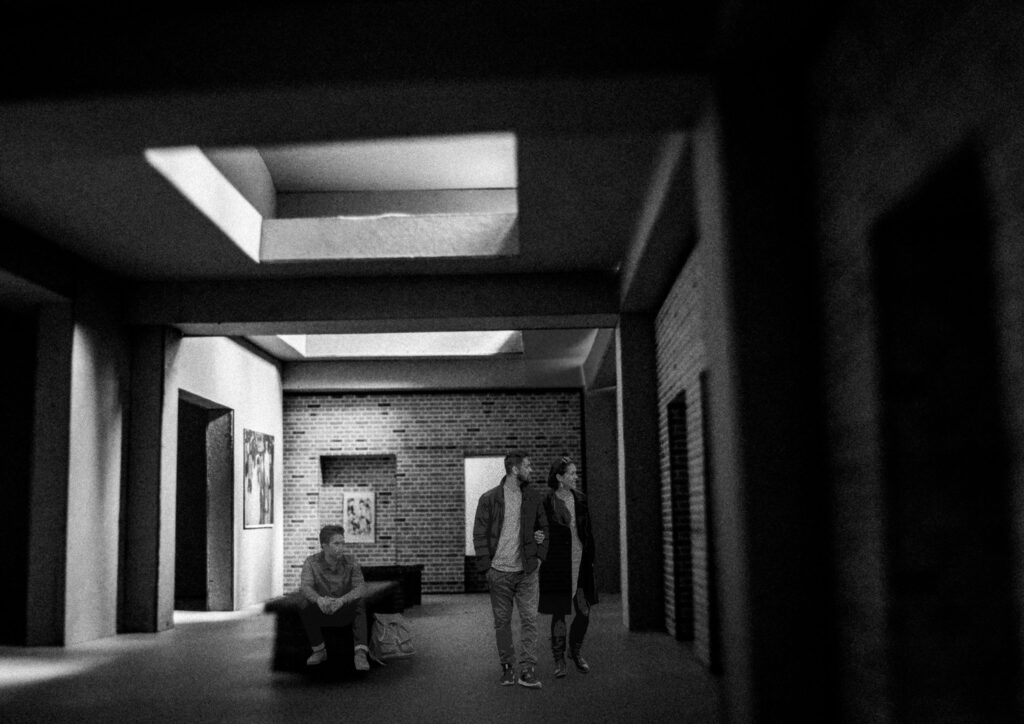
Depicted are the Museum spaces that have been carved from the shops along the South-West Elevation of the scheme. The cuts act to liberate and breathe life and new purpose into the existing architecture.
1:25 Interior Model
Card, Tracing Paper and Textures printed
CONTACT EMAIL: senura.ratiyala@gmail.com
LINKEDIN: https://www.linkedin.com/in/senura-ratiyala-14845bba
Curated by Andreea-Ioana Ciutac
